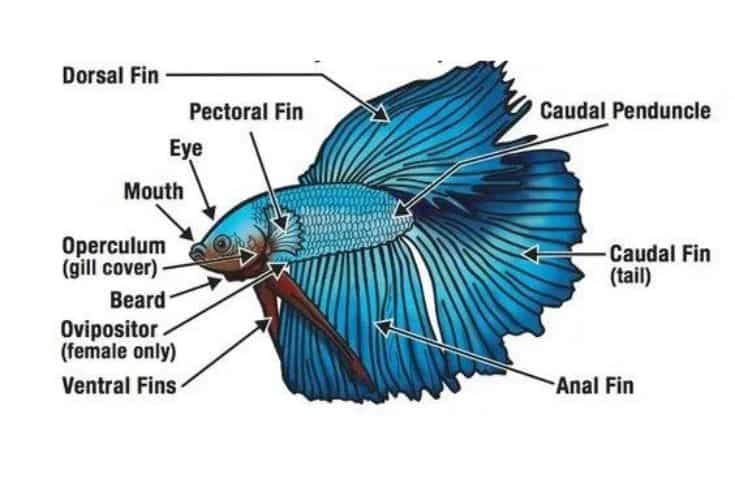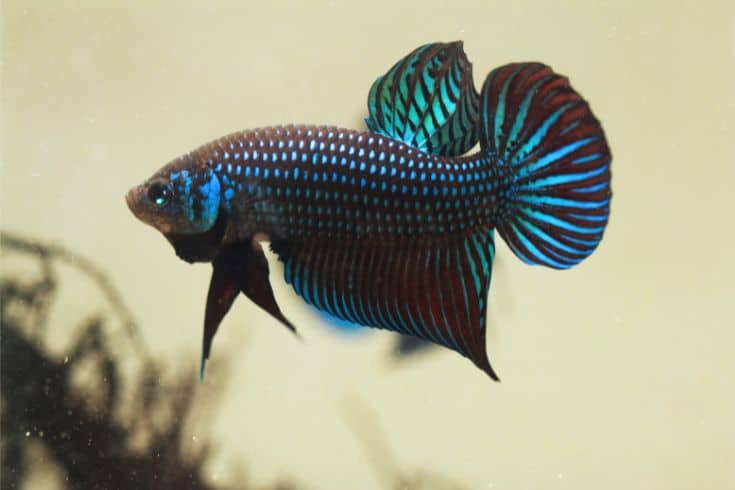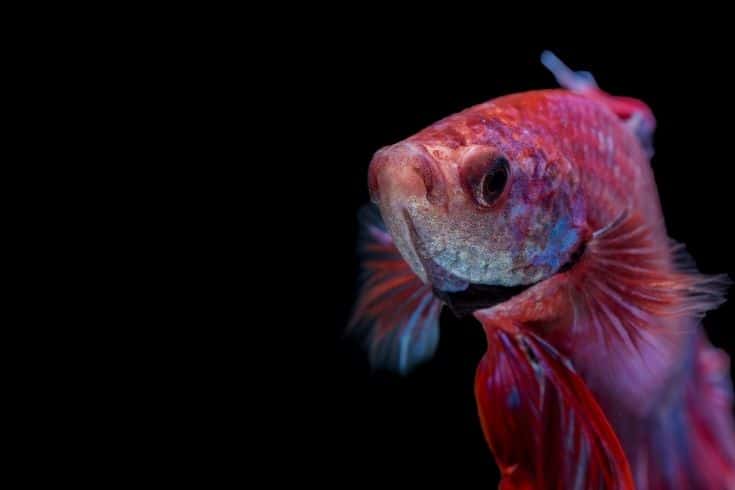Betta fish, often known as Siamese fighting fish, are a popular freshwater aquarium fish species. They are native to tropical Southeast Asia and are known for their striking colors and long fins. While bettas are commonly kept as pets, many people are curious whether these fish can be found in the wild.
In this article, we will answer the question: do betta fish live in the wild? We’ll also discuss the natural habitat of bettas and what these fish need to survive.
Do Betta Fish Live in the Wild?
Domestic betta types as we know them today are the result of hundreds of years of selective breeding. This means that they have been bred for certain desired traits and no longer occur in nature. However, there are still wild populations of bettas that have not been domesticated. These fish are typically found in Southeast Asia, in countries such as Thailand, Cambodia, Laos, and Vietnam.
Wild betta species live in slow-moving or stagnant waters, such as ponds, marshes, and rice paddies. They favor warm climates and typically prefer waters with a temperature between 77-86 degrees Fahrenheit. The natural diet of bettas includes small insects, crustaceans, and larvae.
While domestic bettas come in a wide variety of colors and patterns, wild bettas are usually green, brown, or red. They also tend to have shorter fins than their domesticated cousins.
Habitat and Requirements
Bettas are tropical fish, which means they require warm water to survive. In the wild, bettas live in slow-moving or stagnant waters with temperatures between 77-86 degrees Fahrenheit. These fish prefer habitats with plenty of vegetation, hiding from predators and finding food.
Bettas also need access to oxygen-rich water to breathe. In the wild, bettas live in waters with little surface movement, so they have adapted to extract oxygen from the air. They accomplish this by taking small gulps of air at the water’s surface. In captivity, bettas must have an aquarium with a filter and aeration to provide clean, oxygen-rich water.
Bettas are also known to be aggressive, and in the wild, they will often fight with other wild males for territory. For this reason, it is important to provide them with plenty of hiding places in their aquarium. Plants, caves, and other decorations can give bettas a place to retreat when they feel threatened.
How Do Betta Fish Survive In The Wild?
Wild bettas do not enjoy the creature comforts that their captive counterparts do. These fish must fend for themselves in harsh conditions in the wild. As a result, wild bettas have evolved to be tough and adaptable survivors.
They Have Labyrinth Organs

Bettas in the wild typically find themselves in oxygen-poor water. This is a function of their habitats – bettas often live in stagnant ponds and rice paddies with little water movement. As a result, one key adaptation that allows bettas to thrive in the wild is their ability to breathe oxygen from the surface of the water using a specialized organ known as the labyrinth organ.
The labyrinth organ is an extension of the betta’s gills that is filled with a series of blood vessels. They resemble a maze, hence the name. When a betta takes a gulp of air at the surface, the oxygen diffuses through the walls of the labyrinth organ and into the betta’s bloodstream. This adaptation allows bettas to live in water with very low dissolved oxygen levels.
The key difference between the labyrinth organ and gills is that gills extract oxygen from the water, while the labyrinth organ extracts oxygen from the air. In other words, though all fish need oxygen to survive, most species get this vital gas from the water they live in through a process called diffusion. Wild Betta splendens, on the other hand, use this special organ to supplement the oxygen they absorb from the water, allowing them to live in habitats that would be otherwise unsuitable for fish.
They Can Breed In A Wide Variety Of Conditions

Bettas are known for their ability to adapt to a wide range of habitats. This flexibility extends to their breeding habits as well. Betta fish mate through spawning, in which wild betta males and female fish come together and release their eggs and sperm into the water. The resulting offspring hatch a few days later.
Bubble-nesting bettas can spawn in a wide variety of habitats, from stagnant ponds to moving rivers. This ability to breed in different habitats is another adaptation that allows bettas to survive in the wild. Even if the conditions in one area are not ideal, bettas can still find a suitable location to mate and produce offspring.
As a consequence, betta populations can quickly rebound after being depleted by environmental conditions or predators. This makes them one of the hardiest fish species in the world.
Their Colors Are More Muted
In captivity, bettas come in a wide variety of colors and patterns. From marble Bettas to those with brightly-colored fins, there is a betta to suit every taste. In the wild, however, these fish are much more drab. Male bettas, in particular, tend to be a dull green or brown with little to no coloration on their fins. Females are usually gray or tan with only a hint of coloration.
This muted coloration in bettas provide excellent camouflage in their natural habitats. After all, most common betta species tend to be slow swimmers that inhabit waters with plenty of vegetation. In these conditions, being able to blend in with your surroundings can be the difference between life and death. After all, if a betta cannot avoid being seen by a predator, it is likely to become lunch.
While the colors of wild bettas may not be as flashy as their captive-bred counterparts, they are still beautiful fish in their own right. There is something to be said about the understated beauty of a wild betta.
They Have Shorter Fins
Bettas’ long, flowing fins are one of their most iconic features. In the aquarium trade, bettas are selectively and painstakingly bred to produce fish with ever-longer fins. Hobbyists are enthralled by these beautiful creatures and are willing to pay top dollar for the longest-finned specimens. As a result, the bettas we see in pet stores today have fins that are dramatically different from those of their wild ancestors.
In the wild, however, bettas have much shorter fins. In some cases, their fins may be so short that they are barely noticeable. This is because long fins are a hindrance in fast-moving waters. In these conditions, bettas with shorter fins can swim faster and avoid predators more effectively. As a result, wild bettas have evolved to have fins that are much shorter than those of their captive-bred counterparts.
In addition, shorter fins also allow wild bettas to navigate their habitats more easily. In densely-vegetated areas, long fins can become entangled in the underwater plants, making it difficult for the fish to swim. By keeping their fins short, wild bettas can move through these areas easily. While captive bettas are bred for their long fins, the shorter fins of wild bettas allow them to survive in their natural habitats.
What Do Betta Fish Eat In The Wild?

Captive-bred bettas may be finicky eaters requiring a selection of supplements and flakes, but their wild ancestors are much simpler creatures. In the wild, bettas subsist on a diet of small insects and larvae. While this may not sound like much, it is a relatively nutritious diet containing all of the nutrients that bettas need to survive.
As carnivorous animals, bettas require a diet that is high in protein in order to stay healthy. The small insects and larvae that they eat in the wild are packed with protein, making them an ideal food source for these fish. In addition, this diet also contains various other nutrients essential to betta health, such as omega-3 fatty acids.
While captive bettas may require a more varied diet, their wild counterparts do just fine on a diet of small insects and larvae. This diet provides them with the nutrients they need to survive in their natural habitats.
Conservation Efforts
The export of bettas from their native habitat has led to the decline of many wild populations. As a result, these fish are now considered to be endangered in their natural environment. In an effort to protect bettas and their habitat, the International Union for Conservation of Nature (IUCN) has included them on their Red List of Threatened Species.

In addition, many local conservation groups from Malaysia and Thailand are working to protect bettas and their habitat. One such group is the Betta Conservation Group, which is dedicated to protecting and preserving these beautiful fish.
While there is still much work to be done, these conservation efforts are a step in the right direction. With luck, they will help ensure that bettas continue to thrive in the wild for many years to come.
The Takeaway
Betta fish are not only beautiful creatures, but they are also fascinating animals with a rich history. These fish can be found in the wild, but their appearance differs from the bettas we see in pet stores. Wild bettas have shorter fins that allow them to swim faster and navigate their habitats more easily. They also have more muted colors, as their bright colors are a disadvantage in the wild.
To ensure that bettas continue to thrive in the wild, it is important to support conservation efforts. By doing this, we can help protect these beautiful fish and their habitat for generations to come.
We hope you enjoyed learning about bettas! If you have any questions, feel free to ask in the comments below. And be sure to check out our other articles on these amazing fish – we love bettas and want to get the word out as best as we can!
